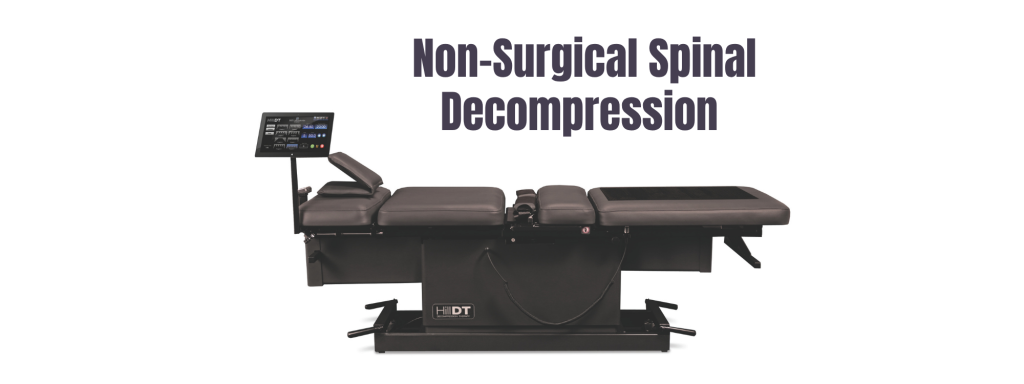Everything Works Better with Chiropractic: Unlocking the Body’s Natural Potential
Chiropractic care is more than a solution for back pain—it’s a powerful way to support the function of your entire body. From the brain and nervous system to the heart, lungs, muscles, and even the immune system, everything in your body is connected. And the key to keeping it all working at its best lies in the health of your spine and nervous system.
At the center of chiropractic care is a simple yet profound truth: your body heals, functions, and adapts better when your spine and nervous system are free from interference.
🧠 The Brain–Body Connection
The brain is the command center of your body. It communicates with every organ, muscle, and tissue through the nervous system. The spinal cord—protected by the spine—serves as the main communication highway. If the spine becomes misaligned, even slightly, it can disrupt this communication.
These misalignments, called vertebral subluxations, interfere with nerve signals, reduce the body’s ability to adapt to stress, and limit function. Chiropractic adjustments remove these interferences, improving the body’s ability to heal itself, maintain balance, and function efficiently.
💪 From Performance to Prevention
Whether you’re a child, an athlete, or a working parent, chiropractic care helps your body function better. Here’s how:
- Athletes recover faster, prevent injuries, and perform at their peak.
- Children grow with better posture, coordination, and brain development.
- Seniors maintain mobility, balance, and independence.
- Professionals experience less stress, better focus, and improved energy.
When your spine is aligned, your posture improves, muscles engage correctly, and joints move more freely. This reduces strain and inflammation while increasing stability and strength—naturally, without drugs or surgery.
❤️ Chiropractic Supports All Systems
Because the nervous system controls every function in your body, chiropractic care has a positive impact across all systems:
- Digestive System: Misalignments in the mid-back can disrupt nerves linked to digestion. Adjustments may help reduce acid reflux, constipation, and bloating.
- Respiratory System: Thoracic spinal alignment supports better lung expansion and oxygen delivery.
- Circulatory System: Chiropractic care can improve heart rate variability and circulation.
- Immune System: Research shows chiropractic adjustments may help modulate immune responses and reduce stress on the body.
- Musculoskeletal System: Proper alignment enhances flexibility, reduces muscle tension, and improves biomechanics.
🛡️ Chiropractic Complements All Healthcare
Chiropractic care doesn’t replace other modalities—it complements them. Whether you’re seeing a medical doctor, physical therapist, or nutritionist, chiropractic helps your body respond better to all forms of care.
- In functional medicine, a healthy spine improves your body’s ability to detoxify and process nutrients.
- In sports medicine, chiropractic increases joint mobility and decreases recovery time.
- In conventional medicine, spinal care can reduce dependency on pain medications and enhance recovery from surgeries or injuries.
In short, when your spine is in alignment, your body works better with any other health support system you choose.
🧬 Wellness from the Inside Out
Chiropractic care isn’t just about feeling better—it’s about functioning better. Every adjustment supports the body’s innate intelligence, the natural ability to heal and regulate itself. It’s not about masking symptoms; it’s about correcting the underlying interference so the body can thrive.
Many people who receive chiropractic care report not only relief from pain but also better sleep, clearer thinking, fewer colds, improved digestion, and more energy. Why? Because when your nervous system is clear, everything works better.
🏁 Live at 100% for 100 Years
You don’t have to wait for symptoms to start taking care of your spine. Keeping your spine and nervous system aligned, balanced, and healthy is a top priority in your lifelong wellness strategy.
Why? Because everything works better with chiropractic.
References
- Chiropractic Care and Brain/Nervous System Function
- Haavik, H., & Murphy, B. (2012). Cervical spine manipulation alters sensorimotor integration: A somatosensory evoked potential study. Clinical Neurophysiology, 123(4), 778-785.
- This study shows that spinal manipulation can alter sensorimotor integration and affect cortical processing.
- Lelic, D., Niazi, I. K., Holt, K., Jochumsen, M., Dremstrup, K., Taylor, H. H., & Haavik, H. (2016). Manipulation of dysfunctional spinal joints affects sensorimotor integration in the prefrontal cortex: A brain source localization study. Neural Plasticity, 2016.
- Demonstrates that chiropractic adjustments affect brain activity, particularly in areas responsible for decision-making and motor control.
- Chiropractic and Organ Function
- Zhang, Y., Haldeman, S., Underwood, M., & Côté, P. (2008). The effects of spinal manipulation on visceral function: A systematic review of randomized clinical trials. Journal of Manipulative and Physiological Therapeutics, 31(8), 633-638.
- Reviews evidence for the effects of spinal adjustments on non-musculoskeletal conditions like asthma, gastrointestinal function, and blood pressure.
- Kane, M. D. (2001). Effects of chiropractic treatment on primary dysmenorrhea: A pilot study. Journal of Manipulative and Physiological Therapeutics, 24(4), 243-247.
- Suggests a link between spinal adjustments and improved reproductive system function.
- Wenban, A. B. (2006). Chiropractic treatment of chronic asthma using spinal manipulation: A case study. Journal of the Australian Chiropractic Association.
- Case studies showing symptom relief in asthma and other visceral conditions following spinal adjustments.
- Chiropractic and Sports Medicine/Performance
- Lavallee, M. E., & Balam, T. (2010). An overview of chiropractic sports medicine: A decade of progress and contributions. Journal of Chiropractic Medicine, 9(3), 103–109.
- Reviews the role of chiropractic in sports medicine and performance enhancement.
- Botelho, M. B., & Andrade, B. B. (2012). Effect of cervical spine manipulation on respiratory function in young healthy individuals. Journal of Manipulative and Physiological Therapeutics, 35(9), 707-713.
- Demonstrates improved respiratory function following cervical spine manipulation.
- Jamison, J. R. (1998). Chiropractic care of musculoskeletal injuries in athletes. Journal of Sports Chiropractic & Rehabilitation, 12(2), 54-58.
- Discusses faster injury recovery and performance benefits in athletes under chiropractic care.
-
- Chiropractic Complementing Other Modalities
- Coulter, I. D., Hurwitz, E. L., Adams, A. H., et al. (2002). Chiropractic patients in a comprehensive home-based managed care program. Journal of Manipulative and Physiological Therapeutics, 25(7), 402–412.
- Shows integration of chiropractic in a managed care setting led to reduced hospitalization and medication use.
- Meeker, W. C., & Haldeman, S. (2002). Chiropractic: A profession at the crossroads of mainstream and alternative medicine. Annals of Internal Medicine, 136(3), 216-227.
- Highlights how chiropractic bridges allopathic and alternative care, supporting whole-person wellness.
- Chiropractic and Proactive, Long-Term Health
- Hartvigsen, J., French, S. D., Karstens, S., et al. (2018). What low back pain is and why we need to pay attention. The Lancet, 391(10137), 2356–2367.
- Emphasizes the importance of long-term, non-pharmacological care for chronic pain, aligning with chiropractic’s proactive model.
- Alcantara, J., Ohm, J., & Kunz, D. (2009). The safety and effectiveness of pediatric chiropractic: A survey of chiropractors and parents in a practice-based research network. Explore, 5(5), 290-295.
- Supports chiropractic’s role in preventive, lifelong care from infancy to adulthood.




